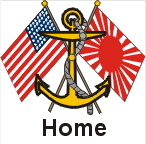 |
|||||||||||||||||
|
|
|||||||||||||||||
|
Buy your copy at these fine stores! |
|||||||||||||||||
 |
|||||||||||||||||

|
|||||||||||||||||
 |
|||
|
|
|||
|
Sprague watched silently from the Tangier's bridge, a characteristically unemotional look on his face as the Japanese planes streaked over the Tangier's port side, attacking the Ford Island Naval Air Station. Plumes of fire and smoke filled the air. A string of bombs hit a hangar packed with American PBY patrol planes, extinguishing it in a pyre of fire and smoke. Sprague estimated that about forty or fifty planes had attacked Ford Island and the ships anchored in the surrounding water. As Sprague's crew filled the sky with antiaircraft fire, Japanese torpedo bombers released a rain of destruction. Two torpedoes slammed against the side of the old battleship Utah, sinking it in just eight minutes. Shortly after that, the cruisers' Raleigh and Detroit were hit. The Raleigh soon sank by its stern. Then, as if a torrent of turmoil had been turned off abruptly, the attacking airplanes, their cargo of torpedoes spent, wheeled away northeastward toward Pearl City, flying over the nearby mountains, and returning to their carriers some 200 miles to the north. On the southeastern side of Ford Island, the same spell of destruction reigned. A pillar of black-red smoke shot into the air directly above the mortally-wounded Arizona. This once-proud queen of the American Pacific Fleet lay now in the oil-covered, flaming water - a twisted mass of red-hot steel. More than 1,000 men had perished in her decks below. The battleships Utah andOklahoma were also total losses. Meanwhile, smoke enveloped the Tangier in a cloak of invisibility, and this invisibility became a shield, helping her escape any significant damage. Had she been hit, the inevitable explosions from the many stored torpedoes below her main deck could have wiped out half of Ford Island. Columns of black smoke meanwhile rushed skyward from the other battleships lining Battleship Row, and in this massive stockpile of destruction lay the demise of the American Pacific Fleet's battle line. It now lay on Pearl Harbor's muddy bottom. Cliff Sprague issued few orders on that fateful day. Instead, he watched quietly as his crew went about their duties. One crewman remembered, "But then, he always was cool. At Pearl Harbor, he acted like he'd thought everything out. Sprague knew just what to do, like he was born to command during a crisis." Another reason also kept Sprague on the bridge. His inexperienced crew had never been through an enemy attack, and since they were not battle tested, they needed to see their commander facing the enemy along with them. An officer on the Tangier remembers, "All those men on the main deck and above it, at one time or another as they fought, could see Sprague calmly standing there throughout the battle. That impressed us officers and encouraged the men." During a lull in the bombing, between 8:25 and 8:40 a.m., the Tangier's crew had time to check the watertight doors, hatches, ports, ammunition supplies, and hoses. As they moved about the ship with calmness and efficiency, their demanding training schedules reaped enormous rewards. |
|
|
|
|
|
|